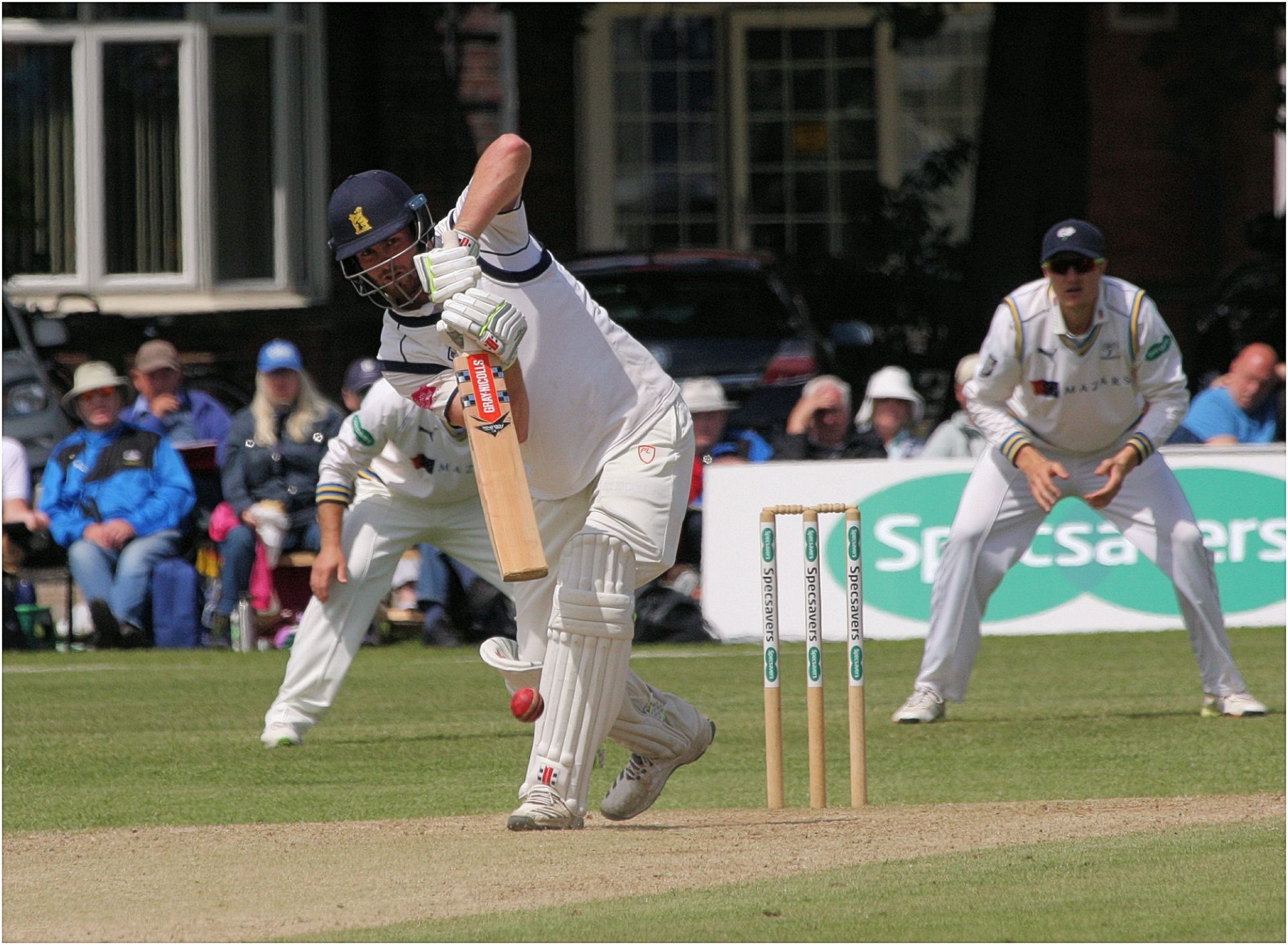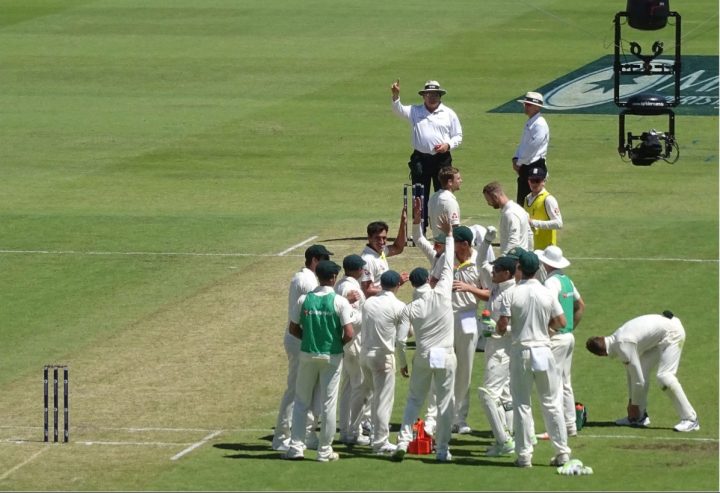Today new writer Jack Gabriel looks at England’s problems at the top of the order. How did we get into this mess?
With mercy finally upon us, and the urn aloft in Australian arms once more, the quadrennial post-mortem of another barbarous Ashes series Down Under can properly begin. In truth, it’s an inquest that has been inevitable since ball one of the tour.
While, for some, immediate focus shifted to England’s T20 outfit in their preparations for another World Cup, the more ardent bastions of Test cricket amongst us have been left to examine where it all went wrong…again.
The overwhelming, if not unanimous, consensus rightly highlights the batting. The aforementioned maiden ball of the series, which saw Mitchell Starc castle Rory Burns’ stumps, proving an ominous portent for what was to come.
Now, whilst no English batsman covered themselves in glory, it was arguably the fragility of the side’s opening partnerships that should be of the highest cause for concern.
The decade-long saga to replace Sir Andrew Strauss, and more recently Sir Alastair Cook, has seen seventeen try, and fail, to cement a place at the top of the order, with this winter’s Ashes undeniably the nadir of the seemingly irremediable search.
Prior to the second innings in Sydney, England’s opening stands on the tour had, on average, lasted just 4.1 overs for a paltry 9.57 runs. Such egregious starts to their innings instantly put England on the back foot and were largely responsible for the team’s perpetual inability to put 300 on the board.
The loss of early wickets regularly exposed the likes of Joe Root to the newer ball, with the talisman walking to the middle inside the opening 10 overs in half of England’s innings. By contrast, the issue occurred just twice to counterpart Steve Smith, both in the final Test.
So, how much blame should be apportioned to Burns, Haseeb Hameed and Zak Crawley? And who should be on the plane for the West Indies tour in March?
For many, the abrupt answer to the latter is: “Not Hameed.” After initial defiance at The Gabba, churning out a gritty 25 off 75 in the first innings and a slightly more fluent 27 in the second, Hameed became acquiescent quarry for a relentlessly metronomic Australian attack.
His next six outings amassed just 28 runs, at a miserly average of 4.66, with the Nottinghamshire opener failing to reach double figures on each occasion. His tour stats were so pitiful, that his average of 10 is the lowest ever recorded by an English opening batsman in a Test series of seven or more innings.
In a prescient warning to the selectors, many analysts highlighted the potential flaw in Hameed’s technique before a ball was bowled. The 25-year-old has a penchant for playing with low hands, an idiosyncrasy ill-suited to the high bounce generated on Aussie wickets.
Unsurprisingly, that particular prophecy was fulfilled all too regularly, with Hameed repeatedly being dismissed by edging sharply ascending deliveries pitched on a fourth or fifth stump line. Given West Indian pitches have historically offered a similar level of bounce to those in Australia, Hameed could face a prolonged exclusion from the side.
In Hobart, the latest trial and error episode paired Burns and Crawley together for the first time. After a characteristically calamitous start in the first innings, the two went on to record the highest opening stand of the entire series in the second. The score on 68 before Burns chopped on for 26.
That returning knock raised Burns’ series average to 12.83. Miserly? Absolutely. But it’s still disputable as to whether the Surrey opener should have been the man to be dropped in the first place.
The longer-term stats certainly defend his corner. During 2021, he made the second most runs of any England player and at the third highest average (27.98) of the batting contingent, behind Joe Root and Dawid Malan.
Only Root passed fifty more often than the three occasions Burns did, and the 31-year-old was the only player, other than the England captain, to make a Test hundred in the calendar year.
Additionally, of England’s 2021 opening quartet, Burns holds both the highest Test average (30.32) and the highest first-class average (41.40). After surpassing 1000 first-class runs in each season between 2014 and 2019, the Surrey stalwart’s copious run-scoring continued domestically in 2021. His average of 47.46 was more appreciable than Hameed’s (37.72), Crawley’s (33.52) and Dom Sibley’s (36.15).
Such statistics do not completely exonerate Burns’ abysmal Ashes average this winter, but they do indicate a slightly precipitous exclusion, one which was emblematic of the shambolic selection decisions made both on the tour and, arguably, before the travelling party even boarded the plane.
With regard to both the model and execution of their selection process, perhaps England have been hoisted by their own petard. A high rotation and a horses-for-courses mantra hasn’t been successful. Largely because the wrong horses have been chosen for the wrong courses.
One horse that wasn’t even flown out, Dom Sibley, is a victim of England’s slightly myopic approach to selection. After a flourishing 2020 averaging 47.3, last year acted as a sobering reminder of the ruthlessness of Test cricket for the Warwickshire opener.
Sibley’s weakness against spin was exposed in sub-continental tours to Sri Lanka and India, where turning pitches saw him labour to an average of 17.81. Then, after four matches facing the world’s best two Test sides in English conditions, he was dropped for Hameed.
But many highlighted that his technique and temperament are better suited to Australian conditions than his replacement’s. Sibley is taller and plays with higher hands than Hameed, a recipe far more conducive to success in Australia than the sub-continent, for example.
Ironically, Sibley was selected for tours in Sri Lanka and India, but not Australia – where pitches closely mirror the South African wickets he averaged 54 on. Contrastingly, Hameed was left at home for the Asia tours – despite averaging 43.8 in India – but selected for the Ashes tour, where he scored at a meagre 10.
Having boasted an average of 45.2 against the West Indian attack in a fruitful 2020 and given the Caribbean’s bouncier pitches should suit his game, the clamour for Sibley’s recall has merit.
Ultimately, the responsibility for the Ashes selection farrago falls on head coach Chris Silverwood. Following a restructure last spring, Ed Smith was stood down as national selector, affording complete control to Silverwood in the assembling of England’s squads.
Ashley Giles, the managing director of England men’s cricket at the time, cited a need for “greater lines of accountability” when addressing the power shift, something which could cost Silverwood his job following the questionable party and playing 11 picks.
However, to Silverwood’s credit, he did persist with the inclusion of Crawley in the touring party despite an atrocious 2021, in which the Kent batsman averaged just 10.81 from 16 innings on the international scene.
Notwithstanding such a scant return, Crawley showcased his true potential during second innings knocks in Sydney and Hobart. An aesthetically pleasing 77 in the former demonstrated his exciting repertoire, with some terrifically timed on-drives, pull shots and clips off his pads all racing to the ropes.
For England fans, it was refreshing to see someone manfully counter the brilliance of the parsimonious Australian attack with such distain. Perhaps following Jonny Bairstow’s belligerent blueprint from the first innings, it espouses the principle that sometimes attack is the best form of defence. Without going back to the wild extremes of selecting Jason Roy to open, it’s a potential brand to endorse moving forward.
Crawley’s innings in Sydney was a snapshot of his capabilities, one which will have cemented his case, but not his place, for opening in the West Indies. And also, one which proves stats can adversely belie ability. Whilst a sole good knock doesn’t render him as the panacea of England’s longstanding issues, it’s a promising step closer to solving the conundrum.
The question remains whether Crawley is a better three than an opener. His average is higher at three (38.5) than when at the very top of the order (22.68). But that debate can wait for another day.
For now, he’ll be hoping to step out in Antigua, most likely alongside Burns again, for the latest instalment of this perennial saga. Approaching his 24th birthday, there’s genuine justification for hopes that Crawley can offer renewed life to a moribund batting line-up and be half of the long-term solution to England’s opening enigma.
Jack Gabriel









Good article and excellent stats. And I agree, unless they try someone else, Burns and Crawley look likely to be given another go in the W.I. All I can think of is maybe Tom AbelI or James Vince. Horror you may say, but at least he’ll likely get you a cultured 30 or so. Of course now Giles has been given the spanish archer, Strauss is back in charge at least for the meantime. Not sure which is worst really. Surrey supporters seem to have news that Alec Stewart could take over from the clueless Siverwood, at least temporarily. But I haven’t seen that confirmed yet. If like to see Livingstone given a go in the side. Something about him I think.
I agree there’s something about Livingstone (although his f-c average is similar to Roy’s, who I think was the last batter to be parachuted into the test team because he was a good white-ball player and there was something about him!) But I’m not at all convinced that now is the time to do that, if it’s ever a good idea, given that he averaged 11 last season and he hasn’t had a good county season for five years.
This obsession with Crawley–a player who averaged around 28 on this tour and who only once passed 36, who averages 28 in tests (or 20.5 if you take away his one highest innings out of 32), who averaged 33 in the county season despite playing in division 3, and who averages 31 in f-c cricket–is absolutely part of the problem. It’s a settling for mediocrity. He might turn into a capable test batter–although I think his f-c average makes it unlikely–but the way to find that out is to play him in the Lions, not to make him England’s test opener. A good test team needs better than an opener who scores an aesthetically pleasing 70 once a series and 16 the rest of the time.
It’s closely linked to a couple of other things. One is the obsession with looking good–we see it with Crawley, with Clarke, with Vince, and the bottom line is that even inconsistent and ugly-looking Burns and Sibley score more than all of them. What counts is how many, not how stylishly.
The other is the idea that, as Jack puts it, “stats can adversely belie ability”. Actually, unless there’s an anomaly which unbalances them or something that is only apparent if you go into more detail (Crawley’s 267, say, or a huge difference between home and away record) they don’t. That idea is a close cousin of looking stylish/good in the nets and so on. The whole point of stats is that they record what you ACTUALLY did rather than how good you looked, how well you were doing in the nets etc. So they might adversely belie purely technical talent, but cricket at test level isn’t only a test of technical talent: it’s about your temperament. Ramprakash might have had the “talent” to average 50 in tests, but….he didn’t.
This is also leading to some odd suggestions for openers for the WI tour. I can partly see why–England’s issue is that they don’t have a remotely good test opener, or anyone in county cricket who’s ready to step up–but why would Abell (average 32, never scored more than 135 in a professional innings) or Lees (average 34 and who failed on the Lions tour of Australia) suddenly turn into the next Strauss or Cook?
I would arrange a Lions tour post haste and send on it all the younger players who show potential but nothing more at this stage, and who not coincidentally rarely average more than mid-30s in f-c cricket: so Hameed, Crawley, Bracey, Pope, Lawrence. The only one I would introduce on the WI tour is Bohannon, on the basis that at least his f-c average is several runs higher. As for openers, Burns and Sibley are probably the best bets for two of the three spots, and personally I would recall Robson as the third–not again that he’ll turn into Graham Gooch, but he doesn’t average 31 in f-c cricket, he might be passable from past experience and there’s not much point sending him on a Lions tour.
As for the other two slots in the top seven–Bairstow and Foakes for me. Bairstow though is in the last chance of the last chance saloon and needs to prove that he can play innings like the one in the Ashes on a more regular basis than he has been doing; and clearly we don’t really know how good Foakes will be as a test batter, although I think he’s an underrated county batter. As for reserve batter, heaven knows: I think I’d go for Billings as reserve everything, again just because I’d like to see the younger players on a Lions tour before putting them in the test team and there’s no point sending him on one.
And, to follow this up, news that Joe Clarke–terminally inconsistent Joe Clarke, who since he was last picked for the Lions has averaged 36 in 2021 and didn’t score a hundred until the last week of the season, averaged around the same in 2020, and in 2019 averaged 11 between the first and last weeks of the season–is on the standby list for the WI.
But he has a wonderful-looking cover drive so it’s all OK. I could understand him being close to the white-ball team–although I’m somewhat concerned that he too often seems to falter in bigger tournaments–but in red-ball?!
“The decade-long saga to replace Sir Andrew Strauss”.
It’s actually longer – Strauss averaged 32 in the last third of his career after his century in the first Ashes 2010/11 Test (and that was puffed up by two centuries against WI at their most atrocious in 2012).
The point about Sibley and Hameed is well-made – I doubt they’d have been that successful picked the other way around but at least it would have maximised their chances.
Crawley looks more a No.3 than an opener to me and that is of course also a problem position. Unless anyone has impressed for the Lions (and this is where the Lions’ cut-backs and white-ball focus hurt) I guess Burns and Crawley have to be given another go in WI – however come the summer whoever can hit the ground running in the CC probably gets the call-up (Libby? Lees?) and/or maybe Sam Robson should be given a second shot. Watch out for media attempts to big-up Keaton Jennings if his form gives them any excuse because it was clear some in officialdom wanted him as captain.
Finally, I would urge some caution in using stats for historical comparisons. England’s last two away series have been on exceptionally bowler-friendly pitches with generally low scoring matches and the home openers often struggling too.
Although I admire Rory Burns’s many qualities, I don’t think that he can possibly succeed against top-class bowling unless he fundamentally alters his technique. The exaggerated movement of his front foot makes it almost inevitable that he ends up playing across the front pad, unless the ball is conveniently pitched on or just outside off stump. To counter deliveries moving away from him, Rory Burns needs to move back and across with his back foot; as the front foot has already moved, this is almost impossible, which is why he is so vulnerable to edges in the slip/gully cordon.
Let’s hope that Zac Crawley builds upon his promising performances in Australia. At his best, pulling or driving straight past the bowler, he reminds me of Michael Vaughan in his pomp. Although he didn’t make a huge number of runs, he did at least play some shots of real quality and class.